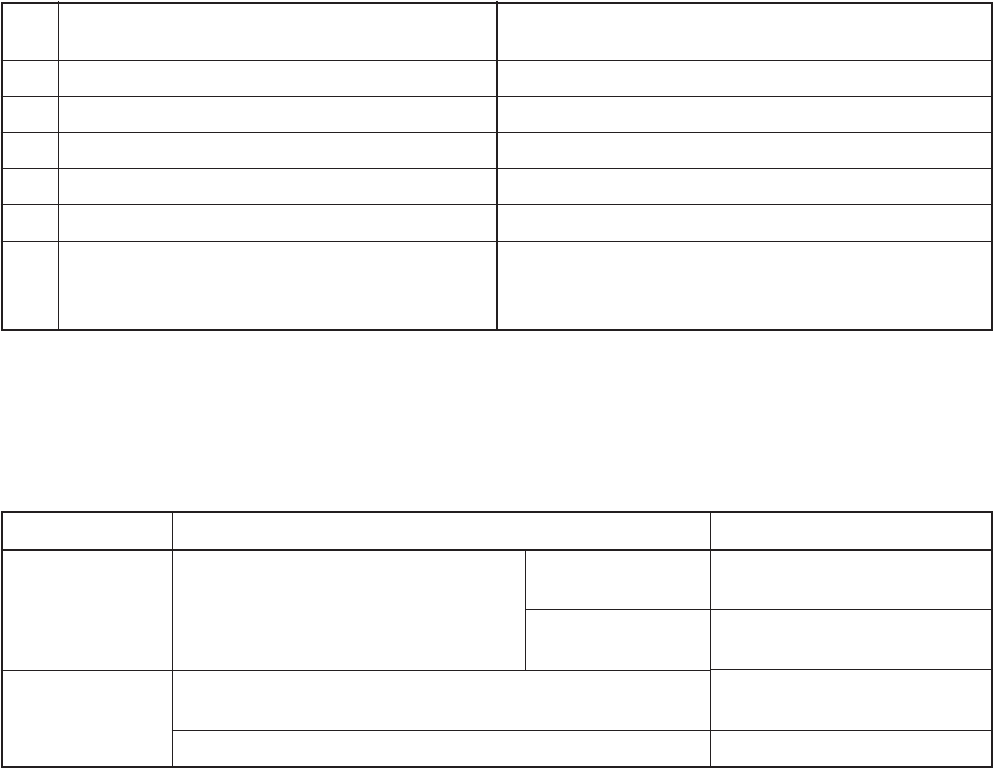
– 34 –
9-2. Primary Judgement of Trouble
Sources
9-2-1. Role of Indoor Unit Controller
The indoor unit controller receives the operation com-
mands from the remote control and assumes the fol-
lowing functions.
• Measurement of the draft air temperature of the
indoor heat exchanger by using the thermo sen-
sor (TA).
• Louver motor control
• Control of the indoor fan motor operation
• Control of the LED display
• Control of the outdoor unit compressor and the out-
door fan motor.
9-2-2. Display of Abnormalities and
Judgement of the Abnormal Spots
The indoor unit of this machine observes the opera-
tion condition of the air conditioner and displays the
contents of the self-diagnosis as block displays on
the display panel of the indoor unit.
Block display
OPERATION display flashing (1 Hz)
OPERATION display flashing (5 Hz)
OPERATION display flashing (5 Hz)
OPERATION display flashing (5 Hz)
OPERATION display flashing (5 Hz)
OPERATION, TIMER and FAN-ONLY display
flashing (5 Hz)
Block display
Power failure (when power is ON)
Thermo sensor (TA) short/break
Heat exchanger sensor (TC) short/break
Indoor fan lock, abnormality of indoor fan
Indoor PC board failure
• Gas shortage, other refrigerant cycle trouble
• Heat exchanger sensor open/break/short
• Overload relay trouble
A
B
C
D
E
F
Table 9-2-1
Symptom
No reaction on
remote control
operation
The outdoor fan
does not rotate
Check
Turn off the power once, turn it on
again and try to operate the remote
control again.
The compressor operates.
The compressor does not operate.
Primary judgement
The indoor part (including the
remote control) is defective.
OK.
The outdoor part is defective.
(outdoor fan motor)
The inside part is defective.
Remote control is
not possible.
Remote control is
possible.
(1) Judgement from defective operation or abnormal operation
Table 9-2-2


















